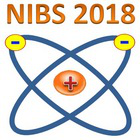Speaker
Dr
Andrew Hurlbatt
(Max-Planck-Institut für Plasmaphysik)
Description
For the continued improvement and development of large negative hydrogen ion sources for NBI applications, beam characterisation is of critical importance for understanding and predicting the interaction of the beam with, for example, a gas neutraliser system. The relationship between the results of beam diagnostics and the physical properties of the beam is not a trivial one, and a full understanding of the data requires the support of a simulation.
This simulation should be fully 3D, in order to encompass the complex electric and magnetic fields, and needs to provide simulated diagnostics that recreate what is present in the experiment. A PIC simulation is unsuitable due to the very large size of the domain, but information at the particle level is still required, as no assumptions about velocity or spatial distributions can be made. Thus a particle tracking code is required; one that calculates the trajectories of particles through pre-supplied electric and magnetic fields.
The code BBCNI [1] has been designed to fulfil these requirements, and is presented here after significant upgrades and improvements. In the code, particles are accelerated from the plasma side of the extraction grids of the system being modelled, and their trajectories are calculated to the calorimeter with a fully relativistic treatment. Along these trajectories, particles can interact with the background gas to undergo reactions and emit photons. Particles hitting any physical object are recorded, allowing the reconstruction of the heat loads on beam line components and the calorimeter. Diagnostic planes can be inserted into the simulation domain to record particle properties at any location in space. Generated photons are recorded, and post-processed to generate spectra simulating the diagnostic results of a Beam Emission Spectroscopy (BES) system. Full traceability of these spectra allow specific features to be linked to specific particle populations and areas of the beam, providing a much-needed understanding of experimental results. While the code is currently configured to assist with the understanding of beam diagnostics on the BATMAN Upgrade and ELISE test facilities at IPP, it is designed to be flexible, and could in principle be applied to any similar ion source.
In order to demonstrate the capability of the code, the first experimental BES results from the BATMAN Upgrade test facility are also presented. Analysis and interpretation of the data in terms of beam properties is demonstrated. A comparison between the experimental spectra and those generated by BBCNI is shown, and the similarities and differences are discussed.
[1] B. Ruf, P. Franzen and U. Fantz, Investigation on the beam homogeneity in large sources for negative hydrogen ions, 40th EPS Conference on Plasma Physics, 2013
Primary author
Dr
Andrew Hurlbatt
(Max-Planck-Institut für Plasmaphysik)
Co-authors
Dr
Dirk Wünderlich
(Max-Planck-Institut für Plasmaphysik)
Dr
Federica Bonomo
(Max-Planck-Institut für Plasmaphysik)
Prof.
Ursel Fantz
(Max-Planck-Institut für Plasmaphysik)

